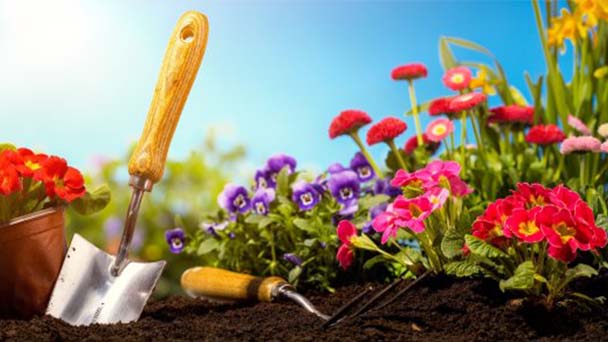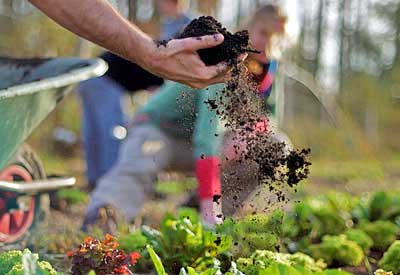How to prepare garden soil for spring planting
Written by Joy
Sep 28 2020

The key to gardening is to remove garden soil for spring planting. If you can plant good soil now, you can plant good vegetables this spring. And, if you start early, you don't have to go to the garden store to load boxes and things to do this. This passage is mainly about how to prepare garden soil for spring planting.


Hugelkültür
Hugelkültür is a long-term method of improving the soil, which uses wood chips. You can bury excess wood (branches, branches, wood scraps) in order to cover the soil with dirt and straw. At first, the decomposition of the buried wood will decompose a lot of nitrogen, and the soil may need more water than usual. After about a year, though, the soil will perfect your garden with rich nutrients, moisture, and beneficial organisms in order to prepare garden soil for spring planting.Lasagna compost
Lasagna compost or sheet mulch combines the advantages of compost with the simplicity of mulching. You should spread compostable materials on alternating layers of green materials (desktop waste, fertilizer, grass clippings, vegetable waste) and brown materials (wood, sawdust, leaves, straw, corn stalks, paper, cardboard). This will immediately reduce the growth of weeds in your garden and decompose the lasagna compost in the coming months, which will help retain water, add nutrients, and create a healthy and beneficial soil biological habitat.Bio-charcoal
Charcoal is one of the best soil amendments you can have. It is created by burning organic materials in a low-oxygen environment. This process burns off the excess gas, leaving behind a carbon-rich substance. Biochar is different from standard charcoal only in its application as a soil improvement. This is a key factor in the continued prosperity of the land of indigenous communities in the Amazon basin. More importantly, biochar can actually help mitigate the effects of climate change by turning soil into a carbon sink. There are several ways to make biochar in your backyard, and some are more complicated than others. All of them know where your charcoal is made from.Soil correction
Most modern home gardeners enrich the soil by adding compost, mulch and fertilizer. But there are several under-radar corrections around the house that can be used to improve the soil in a quick and convenient way. Coffee grounds help acidify the soil with high pH, while the eggshell adds calcium to help acidify the soil. When thinking of composting, seafood may not appear immediately, but adding shrimp, lobster and crab shells will promote the growth of microorganisms, and seaweed is an excellent mulch that can increase nutrition and repel garden pests. A study in Finland in 2009 found that diluting urine and then applying wood ash can be as good as any fertilizer on the market, adding nitrogen, magnesium and other important nutrients to the soil without increasing the risk of disease to prepare garden soil for spring planting.Crop rotation
Crop rotation is not just for farmers. Even in your garden, you'd better switch your plants every season to reduce nutrient consumption and prevent diseases, pests and weeds. Elliott Coleman, a professional market gardener, proposed a simple and effective eight-round crop rotation scheme: potatoes, corn, cabbage, peas, tomatoes, beans, root vegetables, pumpkins and potatoes. For greater flexibility, replacement plants that require a lot of compost and fertilizers (celery, melons, tomatoes, corn, peppers, cucumbers, pumpkins, eggplants and squash) plants that require little or no compost or fertilizer (carrots, Onions, garlic, radishes, leeks and radishes).Latest Updated
- Benefits of Bugleweed - 7 Science-backed Health Benefits
- Bugleweed Dangers & Side Effects - Is It Poisonous?
- How to Plant Evergreen Trees - What You Should Know
- When to Plant Evergreens - Grow Guide for Evergreen Trees
- 12 Wonderful Evergreen Shrubs for Your Garden
- 12 Popular Evergreen Plants with Pictures for Beginners
- When And How To Prune A Lilac Bush Like a Pro
- How to Grow & Care for Lilac Vine (Hardenbergia Violacea)
- Japanese Lilac Tree (Syringa Reticulata) Care & Propagation Guide
- Shumard Oak Pros and Cons - What to Know
Popular Articles
- Winter maintenance of Antirrhinum Majus
- How to Grow Terminalia Mantaly Tree
- How to Grow and Care for Crossostephium Chinense
- How to grow Antirrhinum Majus in spring
- Peristeria Elata (Dove Orchid) Profile: Info & Care Guide
- Underwatered Snake Plant (Sansevieria Trifasciata) - Signs And How To Fix
- How to Care for Brazilian Jasmine Plant (Mandevilla Sanderi)
- How to Grow & Care for Graptopetalum Purple Delight in Summer
- Rosa Chinensis (China Rose): Plant Growing & Care Tips
- How to Care for Baby Sun Rose (Aptenia Cordifolia)